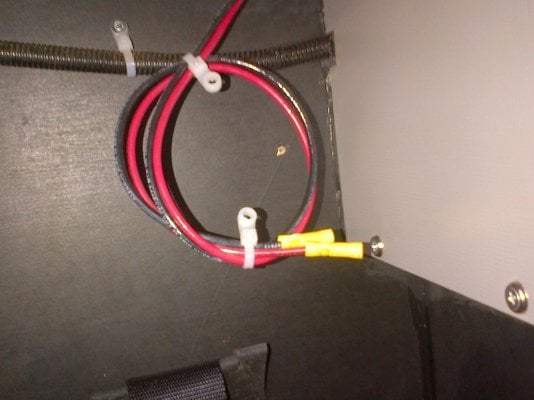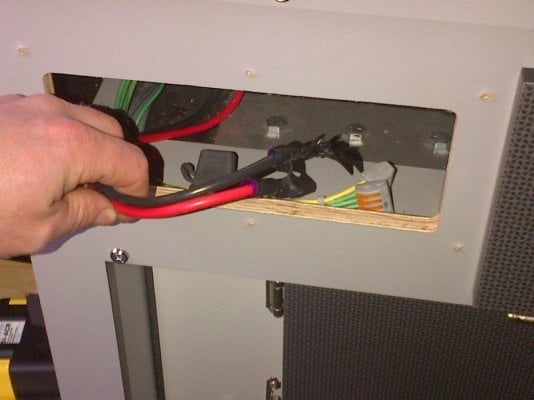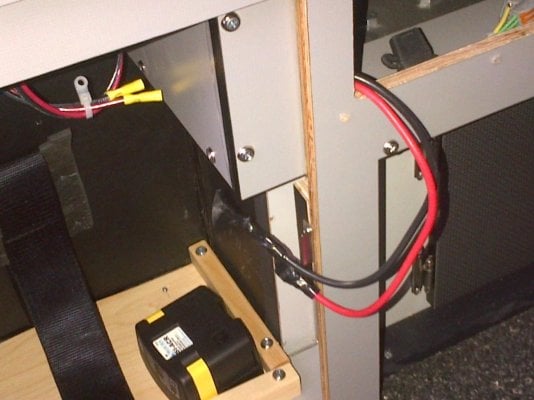pawleyk
Senior Member
Hey Guys,
So I'm installing my new battery and Blue Sea ACR into my 2016 Grandby with front dinette. I had the camper delivered without a battery because I wanted to install my own dual-sensing setup. Looks pretty straight forward with a pair of 10ga red and black wires terminating in the battery box, but I expected they would have voltage that was equal to my charge line and truck battery.
These lines are dead though, no power to them regardless of if the truck is running, or the camper is plugged in. The camper does have power and runs off the 2nd battery in my truck for right now..
I'm thinking these wires in my battery box must be terminated somewhere in my cabinetry, wherever FWC would generally install their isloator, I'm assuming someplace ahead of the main distribution block. I'm sure I can eventually track it down, but was hoping somebody here could point me in the right direction.
I also found another pair of 8 or maybe even 6ga wire behind the vent grill installed next to the fuses/circuit breakers and below the IOTA converter. My guess is they are the dead lines from my solar plugs?
First pic- Coiled 10ga wires in the battery box
Second pic- Heavier wires behind the vent grill (solar?)
Third pic- Both, trying to give a little bit more perspective
So I'm installing my new battery and Blue Sea ACR into my 2016 Grandby with front dinette. I had the camper delivered without a battery because I wanted to install my own dual-sensing setup. Looks pretty straight forward with a pair of 10ga red and black wires terminating in the battery box, but I expected they would have voltage that was equal to my charge line and truck battery.
These lines are dead though, no power to them regardless of if the truck is running, or the camper is plugged in. The camper does have power and runs off the 2nd battery in my truck for right now..
I'm thinking these wires in my battery box must be terminated somewhere in my cabinetry, wherever FWC would generally install their isloator, I'm assuming someplace ahead of the main distribution block. I'm sure I can eventually track it down, but was hoping somebody here could point me in the right direction.
I also found another pair of 8 or maybe even 6ga wire behind the vent grill installed next to the fuses/circuit breakers and below the IOTA converter. My guess is they are the dead lines from my solar plugs?
First pic- Coiled 10ga wires in the battery box
Second pic- Heavier wires behind the vent grill (solar?)
Third pic- Both, trying to give a little bit more perspective




